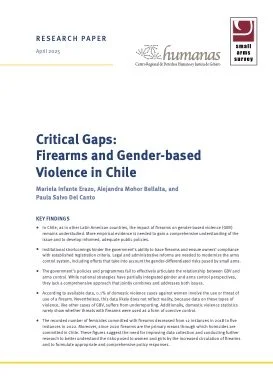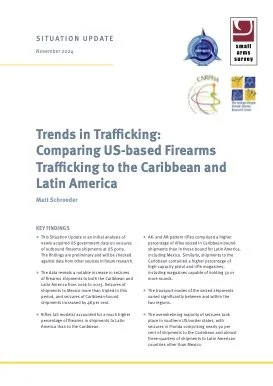ByMariela Infante Erazo, Alejandra Mohor Bellalta, and Paula Salvo Del Canto
According to UNODC’s Global Study on Homicide 2023, Chile remains one of the safest countries in Latin America. Homicide rates have increased, however, as have gendered crimes that victimize women and girls. Additionally, state action and media coverage regarding security in Chile have primarily focused on addressing economically motivated crimes, and efforts have been directed towards the promotion of punitive policies rather than evidence-based and prevention-focused approaches.
Security policies in Chile align with the belief that gun ownership makes citizens safer. Promoting gun ownership to enhance citizens’ security is not without risk, as higher levels of gun ownership have been linked to increased levels of GBV, heightened crime rates, and decreased respect for human rights.
This research paper—Critical Gaps: Firearms and Gender-based Violence in Chile—provides an overview of the current status of gender-responsive small arms control and violent crime in Chile, highlighting institutional shortcomings and failure to effectively articulate the relationship between gender-based violence and small arms control. This paper outlines a roadmap to better identify synergies between policies to address both issues.
Geneva: Small Arms Survey, 2025. 12p.





















